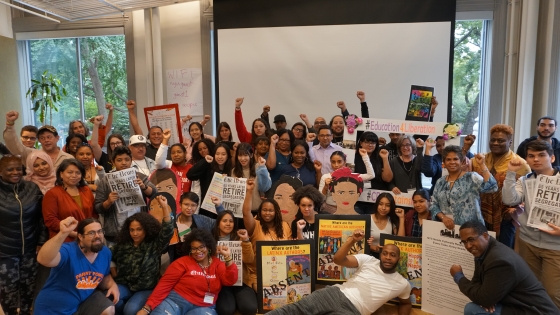Introduction
Every few weeks or months, a racist incident in the nation’s public schools explodes on social media - a mock slave auction, a teacher cutting a child’s dreadlocks, blackface at a school party, racial slurs on the walls—shining a light on the deep inequities and racial hostilities that students of color live with every day. Some people are outraged, schools are defensive or apologetic, and then the public gaze moves on. But there is little attention to another ongoing, daily injustice inflicted on millions of students: experiencing year after year of school curriculum that does not reflect them, their families or their communities.
The lack of representation in curriculum presents a developmental challenge for students striving to establish their identity and sense of self; it also presents an academic challenge, as research shows that students engage more deeply and achieve at higher levels when their curriculum connects to their identities and experiences. Research demonstrates that for students of color and white students, culturally responsive education decreases dropout rates and suspensions, and increases grade point averages, student participation, self-image, critical thinking skills and graduation rates (Browman, 2011 Butler-Barnes, 2018; Carter, 2008; Laird, 2005; Morell, 2013).1 Research from Tucson, AZ shows that students who took Mexican-American Studies classes scored better in Math, Reading and Writing, and were significantly more likely to graduate from high school—low-income and academically struggling students made the largest gains.2 Students were also more engaged in literature and history lessons, and more likely to have a positive perception of their ability to succeed in math and science.3 Research from the San Francisco Unified School District shows that 9th graders who took Ethnic Studies courses improved their attendance on average by 21 percentage points, their GPA by 1.4 grade points, and their earned credits by 23 credits.
Diverse City, White Curriculum: The Exclusion of People of Color from English Language Arts in NYC Schools
Use the button below to download a PDF of the report

